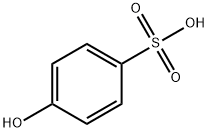Poly(caprolactone) diol
- CAS NO.:36890-68-3
- Empirical Formula: (C6H10O2·C4H10O3)x
- Molecular Weight: 0
- MDL number: MFCD23713083
- EINECS: 500-092-7
- Update Date: 2024-12-18 14:08:57
What is Poly(caprolactone) diol?
Description
Polycaprolactone is a biodegradable synthetic polymer that has been shown to have antimicrobial properties. Polycaprolactone has been used in wastewater treatment and has been shown to inhibit the growth of histological analysis, vivo model, vitro assays, polyvinyl, collagen, carcinoma cell lines, tissue culture, ethylene diamine, water vapor, cell culture, and hydrogen bond. It can be used to prepare biodegradable active packaging films. Since its ester-functionalized backbone structure can assist the adhesive performance, it can be used as the soft phase in the preparation of high-clarity polyurethane adhesive. Polycaprolactone (PCL) and PCL‐based materials are widely applied in the biomedical field[1]. It biodegrades slowly, which makes it more suitable for hard tissues that take longer to heal. Its mixing with other biodegradable materials regulates its degradation rate, making it also suitable for soft tissues[2]. In studies with wild-type strains of bacteria such as Escherichia coli and Staphylococcus aureus, it showed activity against both Gram-positive and Gram-negative bacteria. It also showed activity against the bacterium that causes tuberculosis.
Chemical properties
white waxy solid
The Uses of Poly(caprolactone) diol
Polycaprolactone diol (PCL-diol), along with polytetrahydrofuran diol (PTHF-diol) and ceric ammonium nitrate may be used to polymerize methyl methacrylate (MMA). The product may be used to prepare biocompatible poly(ester urethane)urea (PEUU) and as a precursor for polyurethane (PU) thermoplastic polymer.
The Uses of Poly(caprolactone) diol
Poly(caprolactone) diol is a biodegradable, ε-caprolactone-based polymer for use in biomedical research applications. Due to the synthetic method used, this material features two terminal hydroxyl units, allowing it to be readily functionalized or used in the synthesis of more complex polymers (e.g. polyurethanes) for applications such as shape-memory materials. Due to the high aliphatic content and molecular weight, polycaprolactone diol features increased stability in vivo and high Tg, respectively.
References
[1] Erceg T, et al. Characterization of Films Based on Cellulose Acetate/Poly(caprolactone diol) Intended for Active Packaging Prepared by Green Chemistry Principles. ACS Sustainable Chemistry Engineering, 2022; 10: 9141–9154.
[2] Cernadas T, et al. Preparation of functionalized poly(caprolactone diol)/castor oils blends to be applied as photocrosslinkable tissue adhesives. Journal of Applied Polymer Science, 2020; 137: 49092.
Properties of Poly(caprolactone) diol
| Density | 1.073 g/mL at 25 °C |
| vapor pressure | 0Pa at 25℃ |
| storage temp. | 2-8°C |
| form | solid (waxy) |
| color | White |
| Water Solubility | 9g/L at 20℃ |
| EPA Substance Registry System | 2-Oxepanone, polymer with 2,2'-oxybis[ethanol] (36890-68-3) |
Safety information for Poly(caprolactone) diol
| Signal word | Warning |
| Pictogram(s) |
 Exclamation Mark Irritant GHS07 |
| GHS Hazard Statements |
H319:Serious eye damage/eye irritation |
| Precautionary Statement Codes |
P264:Wash hands thoroughly after handling. P264:Wash skin thouroughly after handling. P280:Wear protective gloves/protective clothing/eye protection/face protection. P305+P351+P338:IF IN EYES: Rinse cautiously with water for several minutes. Remove contact lenses, if present and easy to do. Continuerinsing. P337+P313:IF eye irritation persists: Get medical advice/attention. |
Computed Descriptors for Poly(caprolactone) diol
Poly(caprolactone) diol manufacturer
Ingevity
New Products
Tert-butyl bis(2-chloroethyl)carbamate 4-Methylphenylacetic acid N-Boc-D-alaninol N-BOC-D/L-ALANINOL N-octanoyl benzotriazole 3-Morpholino-1-(4-nitrophenyl)-5,6-dihydropyridin- 2(1H)-one Furan-2,5-Dicarboxylic Acid DIETHYL AMINOMALONATE HYDROCHLORIDE 1,1’-CARBONYLDIIMIDAZOLE R-2-BENZYLOXY PROPIONIC ACID 1,1’-CARBONYLDI (1,2-4 TRIAZOLE) N-METHYL INDAZOLE-3-CARBOXYLIC ACID (2-Hydroxyphenyl)acetonitrile 4-Bromopyrazole 5-BROMO-2CYANO PYRIDINE 5,6-Dimethoxyindanone 5-broMo-2-chloro-N-cyclopentylpyriMidin-4-aMine 2-(Cyanocyclohexyl)acetic acid 4-methoxy-3,5-dinitropyridine 1-(4-(aminomethyl)benzyl)urea hydrochloride 2-aminopropyl benzoate hydrochloride diethyl 2-(2-((tertbutoxycarbonyl)amino) ethyl)malonate tert-butyl 4- (ureidomethyl)benzylcarbamate Ethyl-2-chloro((4-methoxyphenyl)hydrazono)acetateRelated products of tetrahydrofuran








You may like
-
 Polycaprolactone diol CAS 36890-68-3View Details
Polycaprolactone diol CAS 36890-68-3View Details
36890-68-3 -
 Polycaprolactone diol CAS 36890-68-3View Details
Polycaprolactone diol CAS 36890-68-3View Details
36890-68-3 -
 Polycaprolactone diol CAS 36890-68-3View Details
Polycaprolactone diol CAS 36890-68-3View Details
36890-68-3 -
 1975-50-4 98%View Details
1975-50-4 98%View Details
1975-50-4 -
 2-HYDROXY BENZYL ALCOHOL 98%View Details
2-HYDROXY BENZYL ALCOHOL 98%View Details
90-01-7 -
 14714-50-2 (2-Hydroxyphenyl)acetonitrile 98+View Details
14714-50-2 (2-Hydroxyphenyl)acetonitrile 98+View Details
14714-50-2 -
 118753-70-1 98+View Details
118753-70-1 98+View Details
118753-70-1 -
 733039-20-8 5-broMo-2-chloro-N-cyclopentylpyriMidin-4-aMine 98+View Details
733039-20-8 5-broMo-2-chloro-N-cyclopentylpyriMidin-4-aMine 98+View Details
733039-20-8